The best climbing fruits to grow in the garden are perfect for anyone short on space but eager to enjoy fresh harvests.
These versatile plants take advantage of vertical structures like trellises, fences, and pergolas, giving you a way to grow more food in less ground space.
Climbing fruits are not only practical but also beautiful, often doubling as living décor while providing shade and greenery. By training them upwards, you keep your garden organized, reduce pest issues, and make harvesting easier.
Many of these fruits thrive in containers too, making them ideal for city balconies or compact backyards. Here are 11 climbing fruits that bring beauty, flavor, and efficiency to your outdoor space.
#1 Passionfruit
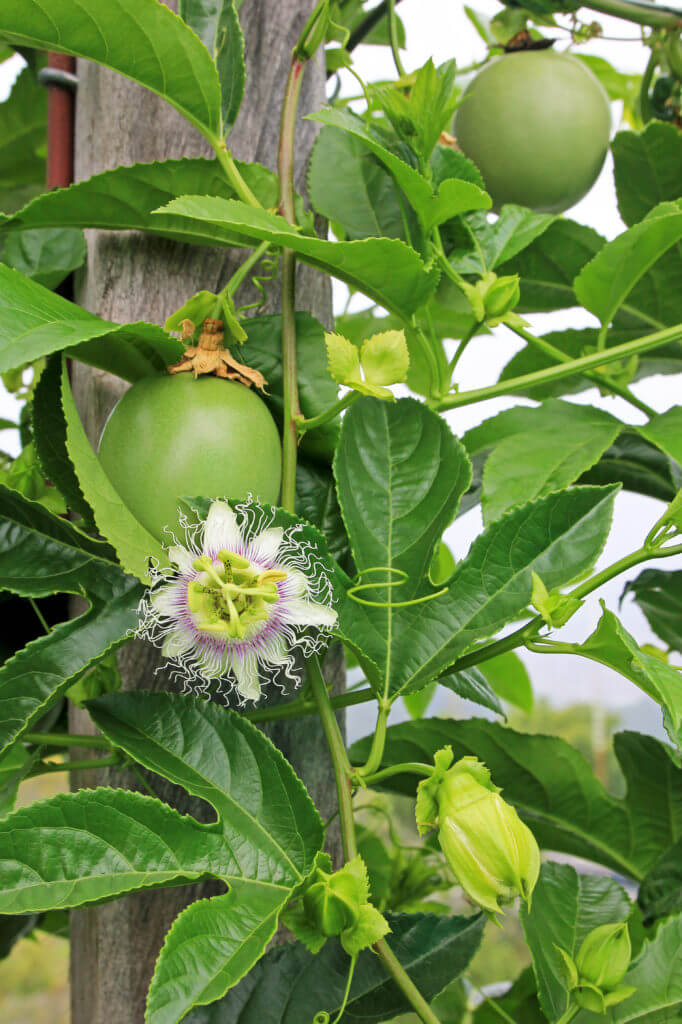
Passionfruit is a vigorous climbing vine that thrives in warm, subtropical climates. It takes about 12 to 18 months before it begins producing its delicious fruits, which ripen from green to deep purple.
This vine needs a sturdy trellis or fence to climb, as it can grow quickly and heavily. Keep the soil well-drained and give it plenty of sunlight to encourage blooming.
Water regularly but avoid soggy conditions, as the roots dislike standing water. With patience, you’ll enjoy exotic fruits and fragrant flowers right in your garden.
#2 Blackberries
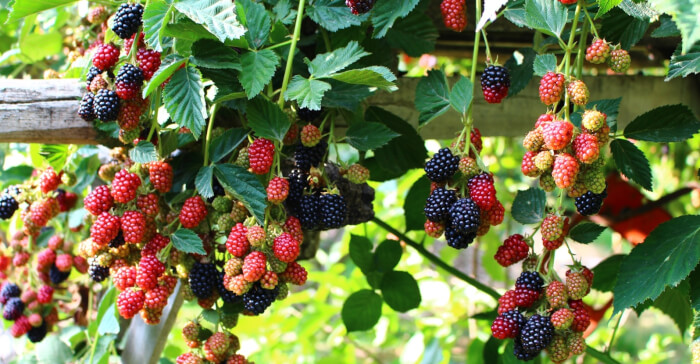
Blackberries grow on thorny canes that spread quickly, making them an excellent choice for training along fences or wires. They love warm days and nights, and full sun will give you the sweetest fruit.
These berries can be invasive in some regions, so pruning and trellis training are important to keep them under control. Water deeply during dry spells to keep plants healthy and productive.
You’ll be rewarded with plump, juicy fruits perfect for pies or fresh snacking. Their lush growth also adds charm to any garden border.
#3 Raspberries
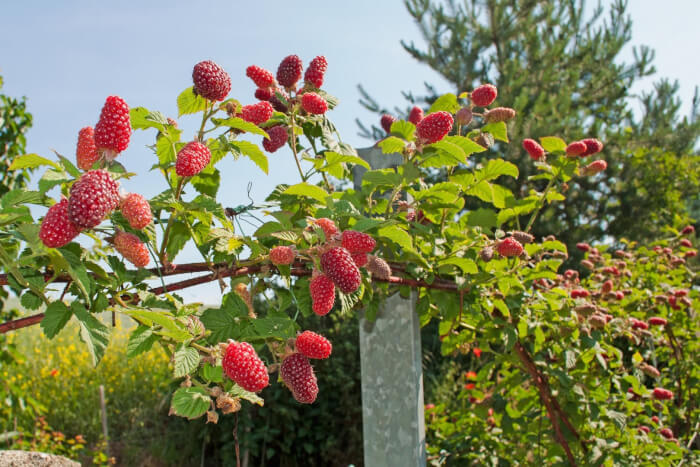
Raspberries are fast-growing climbers that provide harvests in summer or fall, depending on the variety you choose. By planting them on a trellis, you not only make picking easier but also reduce pest problems and disease.
They prefer fertile, well-drained soil and plenty of sun. Mulching around the base will keep the roots cool and moist.
Trim the old canes after harvest to encourage strong new growth for the following season. A small patch of raspberries can keep you stocked with fresh fruit for months.
#4 Gooseberries
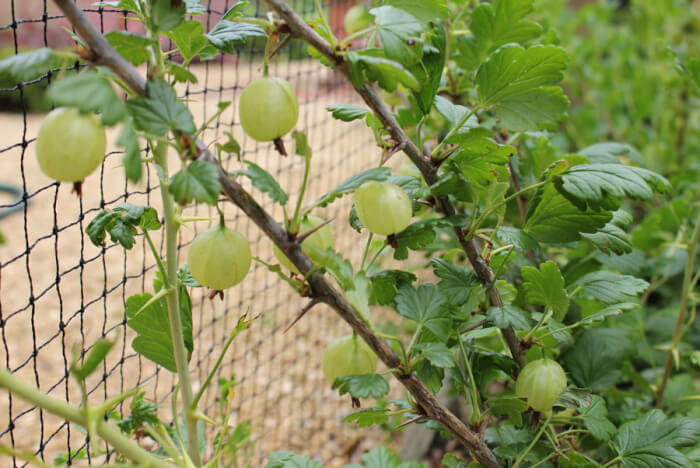
Gooseberries produce small, round fruits that can be tart or sweet, depending on the variety. They can be grown as compact bushes or trained to climb along a fence or trellis. Their versatility makes them great for both large and small spaces.
Gooseberries like sunny conditions but can handle partial shade as well. Keep the soil consistently moist, especially during fruiting season. With little effort, you’ll have fruits that are wonderful in jams, pies, or eaten fresh.
#5 Blueberries
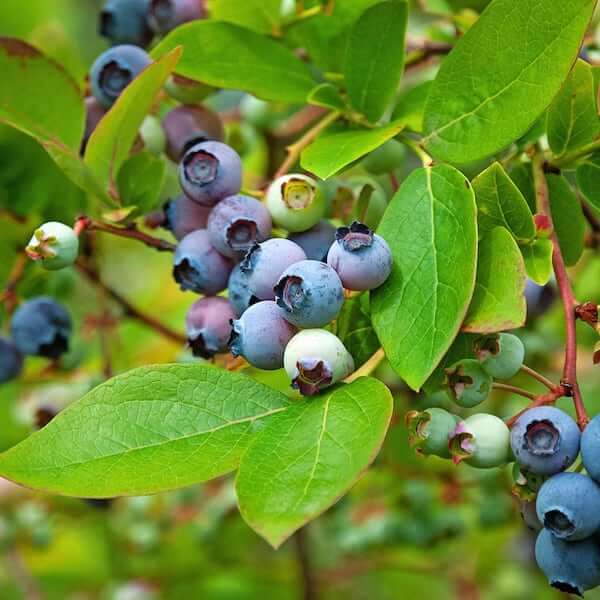
Blueberries are semi-climbing shrubs that fit beautifully into containers or garden beds. Their white, bell-shaped flowers give way to clusters of round, blue fruits.
These plants need acidic soil to thrive, so use ericaceous compost if planting in pots. Position them in full sun, but sheltered from strong winds.
Regular watering is important, especially during dry periods, to ensure plump berries. In autumn, their leaves turn vibrant red, giving you an extra splash of color in the garden.
#6 Dragon Fruit
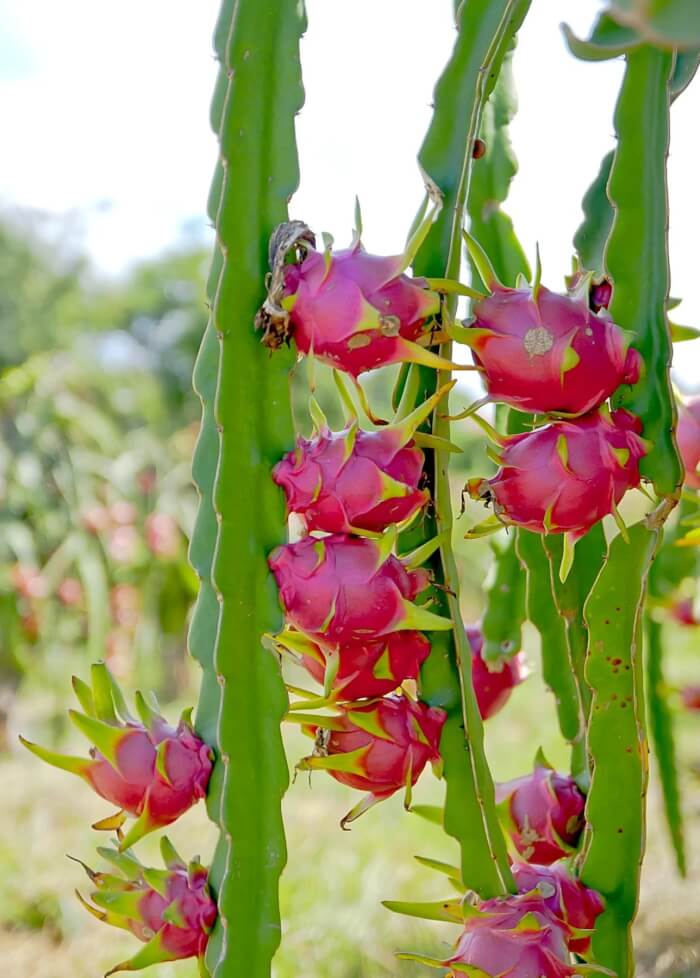
Dragon fruit is a cactus variety that grows best in tropical or subtropical climates. Its climbing stems need a strong support structure, such as a trellis or pole.
The plant produces striking pink and green fruits with a flavor often compared to that of a pear or a kiwi. Place it in full sun and water sparingly once the soil dries.
Regular pruning keeps the plant manageable and improves fruit yield. Its unusual flowers open at night, adding another layer of fascination to your garden.
#7 Honeydew Melon
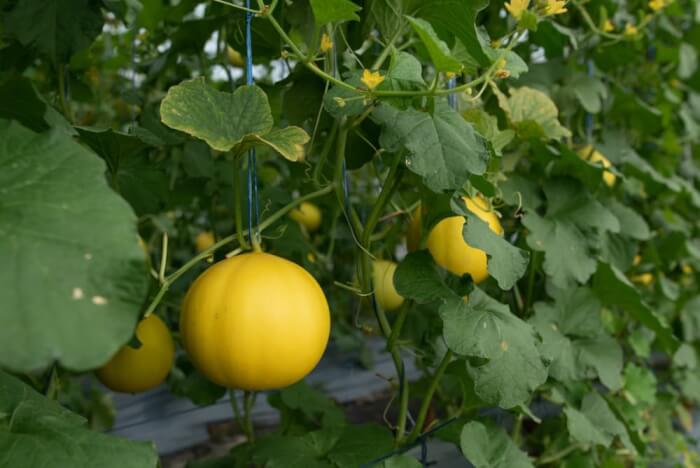
Honeydew melons thrive in warm weather and grow beautifully when trained on a trellis. Their creamy skin and sweet green flesh make them a refreshing summer treat.
Start seeds indoors before the last frost, then transplant them outside in full sun. Water consistently to avoid splitting fruits and mulch to keep soil moisture steady.
A strong vertical structure will help the vines climb and keep melons off the ground. With care, you’ll enjoy fragrant, juicy fruits ready for harvest in late summer.
#8 Grapes
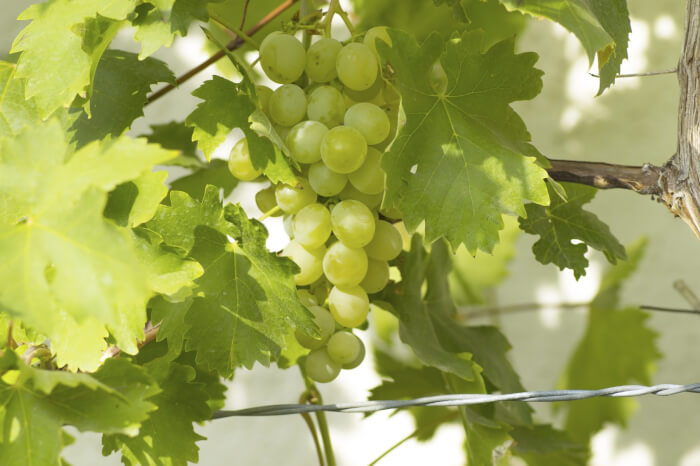
Grapes are classic climbing fruits that turn arbors and pergolas into stunning, productive features. They require full sun, well-drained soil, and plenty of room for their vigorous growth.
Pruning is essential to control the vines and ensure large, sweet clusters of grapes. Train the vines on sturdy wires or a pergola for support and easy harvesting.
Water regularly during dry spells, but avoid overwatering to prevent root issues. Over time, a grapevine can provide decades of beauty and abundant harvests.
#9 Cucumber
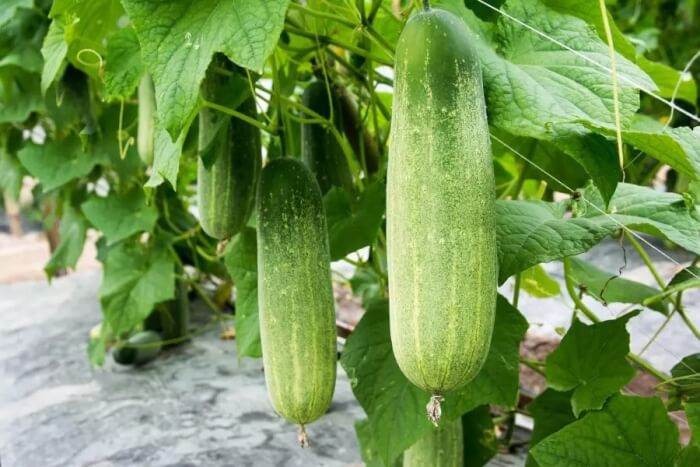
Cucumbers are popular vining vegetables that climb quickly and reward you with crisp fruits. Training them vertically on a trellis keeps the plants healthier by reducing contact with the soil.
This method also saves space and makes harvesting much easier. Cucumbers love warm soil and at least 6 hours of sun daily.
Water consistently to prevent bitterness in the fruits. With regular picking, you’ll encourage the plant to produce more cucumbers throughout the season.
#10 Cantaloupe
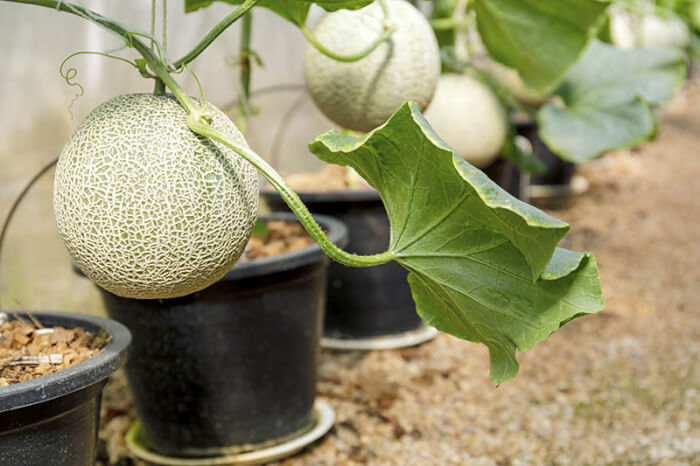
Cantaloupes need long warm seasons with plenty of sun to produce their sweet, fragrant fruits. They can be grown vertically using trellises, with slings or netting to support the heavy melons.
Start seeds after the last frost in nutrient-rich soil. Keep the soil moist but not soggy to avoid rot. Fertilize with compost or balanced feed during the growing season to boost production.
With the right care, you’ll enjoy the reward of juicy, golden-fleshed melons by midsummer.
#11 Watermelon
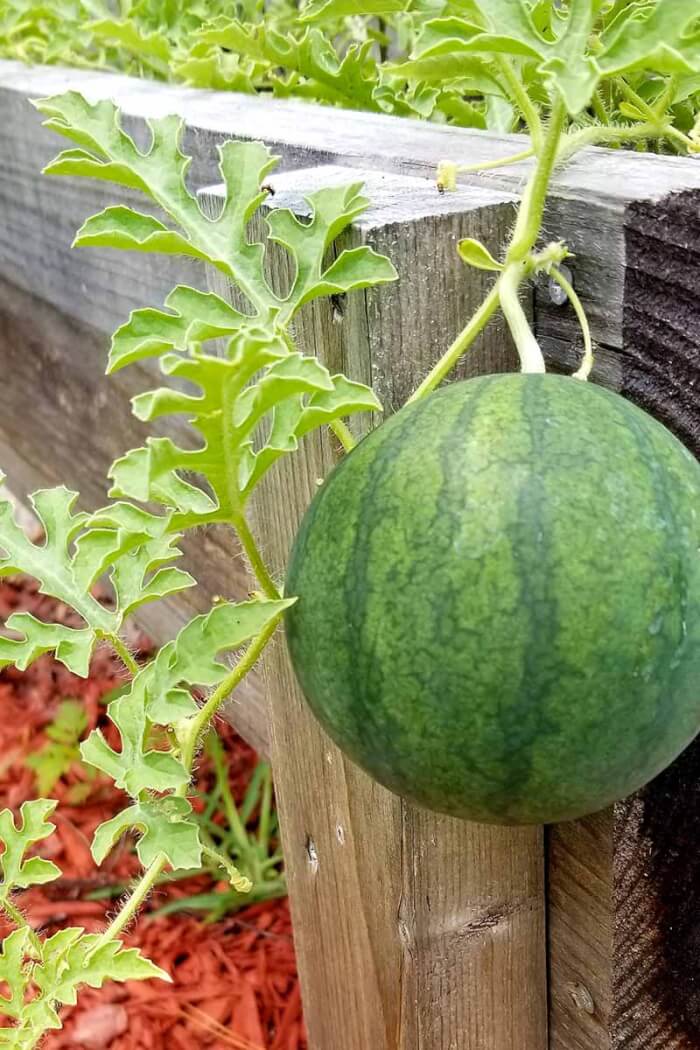
Watermelons are summer favorites with their juicy red flesh, and they can also be grown vertically. Because the fruits are heavy, you’ll need to create sturdy slings or hammocks to support them as they mature.
Watermelons need full sun and warm soil to thrive, so pick the sunniest spot in your garden. Regular deep watering helps develop sweet, flavorful fruit.
Prune side shoots to direct energy into the main vine. With patience, your vertical watermelon garden will deliver refreshing harvests for hot days.
